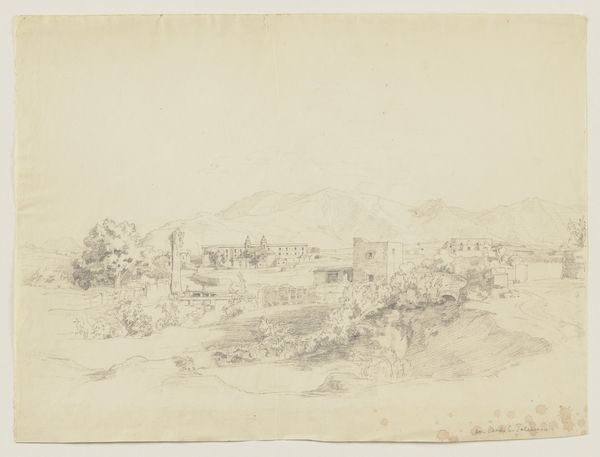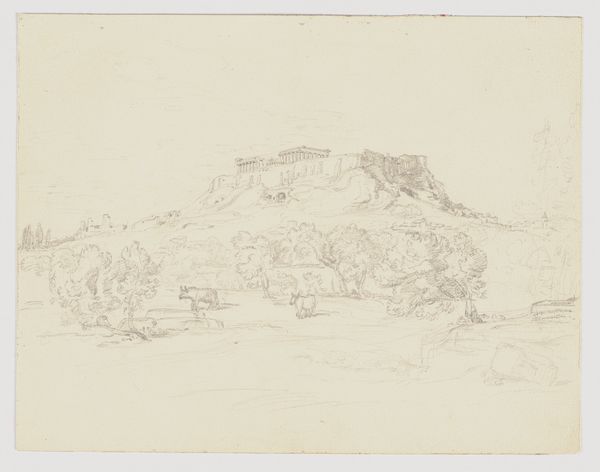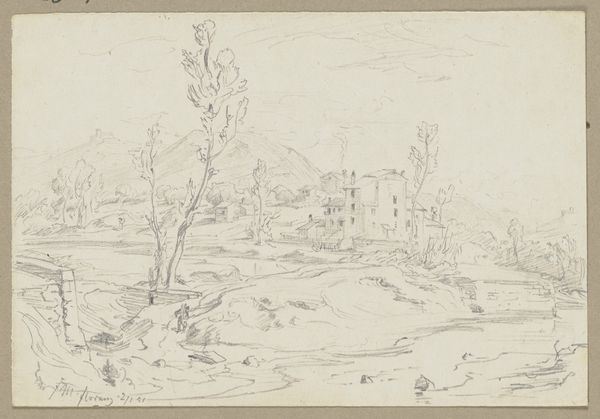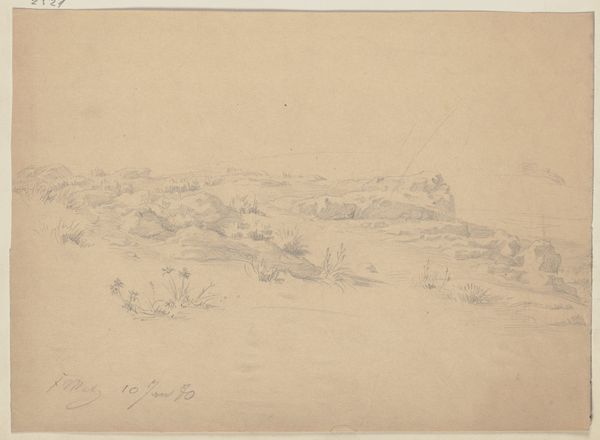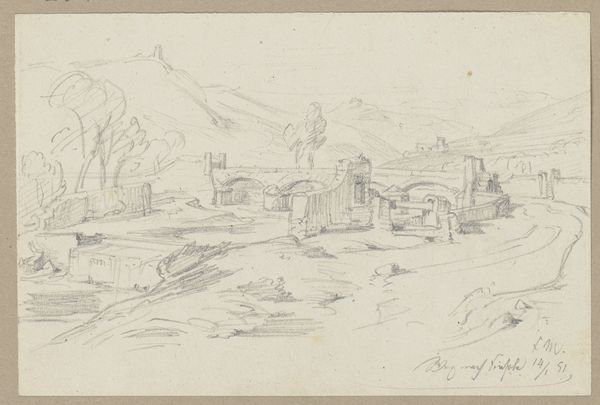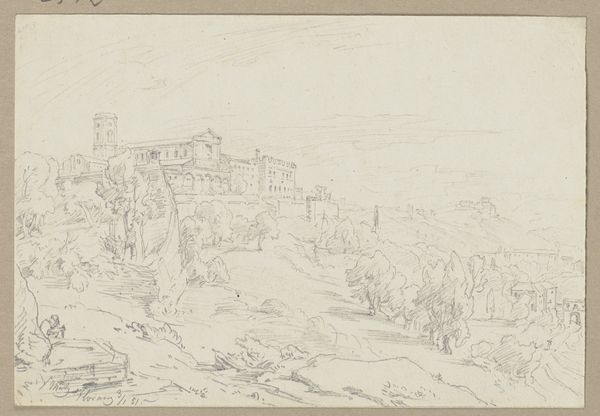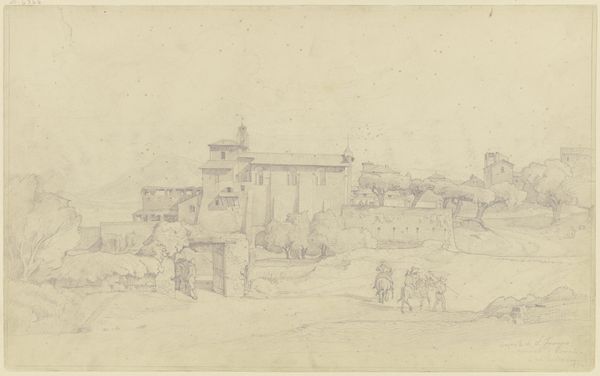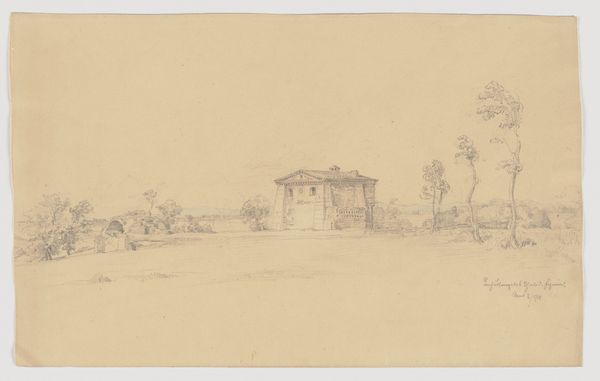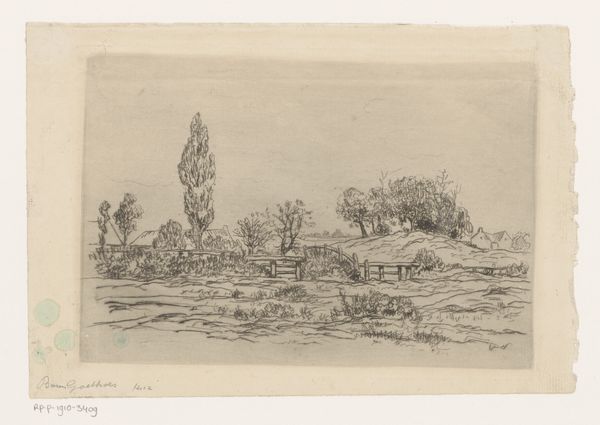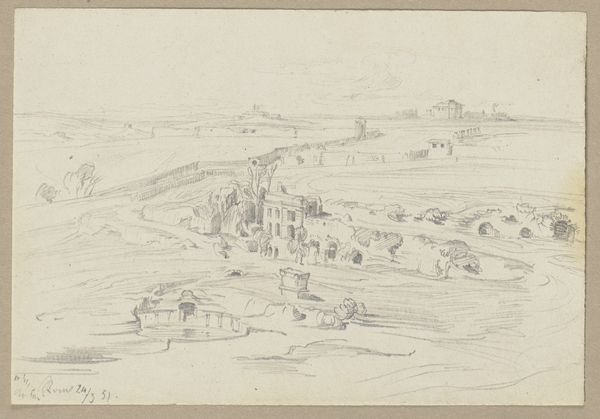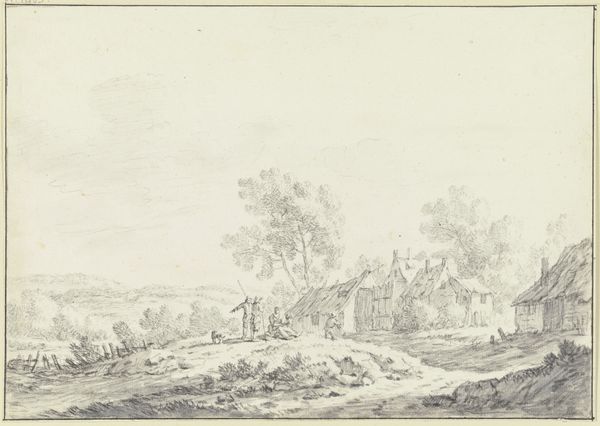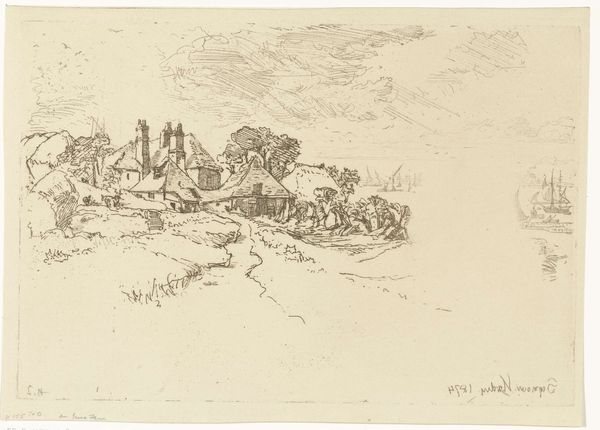
drawing, pencil, architecture
#
drawing
#
landscape
#
romanticism
#
pencil
#
architecture
Copyright: Public Domain
Curator: This drawing, rendered in pencil, depicts a church and other buildings in the Roman Campagna. It is currently held here at the Städel Museum. What are your initial impressions? Editor: My first impression is melancholic, the delicate rendering evoking a sense of passing time. The pale, faded pencil lines, the fragmented structures, speak of decay. Curator: Let's consider the material. Pencil allows for incredibly subtle tonal variations and precise details, but it is also impermanent, erasable. This aligns perfectly with the subject: architecture which, although imposing, is being relentlessly worn away by weather and time. How does that resonate within broader historical narratives? Editor: Well, the Campagna Romana, a once fertile plain, devolved over centuries into a malarial, underpopulated landscape due to shifting agricultural practices, Roman over-exploitation and papal land ownership. So, while depicting a physical place, it also gestures towards socio-political fault lines – exploitation of labor and land ultimately leading to ruination and social neglect. Curator: Exactly! And the buildings themselves! A mix of grand structures and humble dwellings. Think about the social strata inherent in the built environment, reflected here in the different kinds of buildings co-existing – or rather, persisting – in the same space. Editor: The very act of sketching suggests something. It invites considerations of immediacy versus longevity. Drawing in situ meant grappling with the landscape, encountering the materials present. A direct relationship to the very location depicted – no studio mediation here. Curator: Indeed, one sees here a hand making an intellectual, but also a deeply sensorial record. Ultimately, it provides a fascinating look into Rome's layered history. Editor: The drawing embodies an unsettling blend of permanence and vulnerability; ruins signifying both resilience and the impact of human actions on the environment. Curator: This dialogue helps to remind us how materials and subject interact in telling powerful, multi-layered stories about process and place. Editor: And about time, decay and perhaps about accountability too – both then and now.
Comments
No comments
Be the first to comment and join the conversation on the ultimate creative platform.
